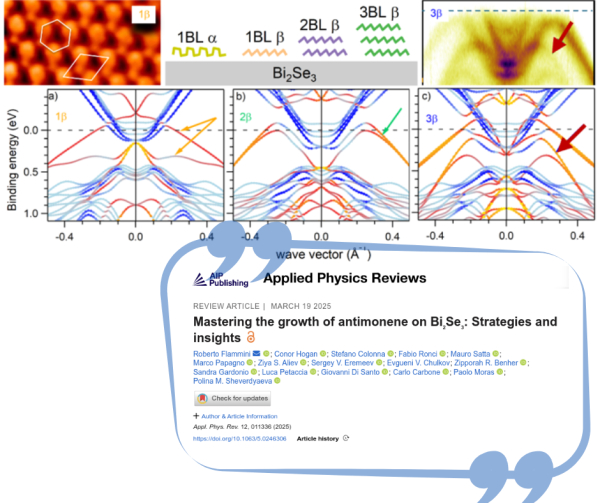The term "antimonene" refers to a two-dimensional (2D) material composed of a single layer of antimony atoms. Its intriguing properties arise from its 2D structure and the strong spin-orbit coupling of antimony, which imparts a nontrivial topology to its electronic structure.
Thanks to these characteristics, antimonene has garnered significant interest in various technological fields, including spintronics, photonics, thermoelectricity, electrochemistry, sensors, energy storage, and biomedicine. Experimentally, the atomic structures of antimonene observed so far are limited to two main phases:
- α-phase (puckered asymmetric washboard), characterized by an asymmetric rectangular surface cell, analogous to the orthorhombic A17 phase of black phosphorus.
- β-phase (buckled honeycomb), featuring a hexagonal honeycomb cell, corresponding to the rhombohedral A7 phase of blue phosphorus.
Currently, the synthesis of these two phases as single layers is achieved via evaporation deposition on specific substrates. In particular, the epitaxial growth of antimony on Bi₂Se₃ is of great interest since the surface structure of this material is compatible with that of the β-phase. Moreover, contact with Bi₂Se₃ renders the β-phase metallic and endows it with nontrivial topological properties.
The aim of this study, published in Applied Physics Reviews (AIP), is to determine the optimal conditions for obtaining a specific antimonene phase. To this end, a combination of high-resolution techniques was employed, including:
- Scanning Tunneling Microscopy (STM)
- Angle-Resolved Photoemission Spectroscopy (ARPES)
- Core-Level Photoemission Spectroscopy
These experimental methods were complemented by DFT calculations and atomistic thermodynamic calculations, enabling an in-depth analysis of the material’s electronic properties.
The research was conducted in collaboration between scientists from CNR-ISM, the University of Nova Gorica (Slovenia), Saint Petersburg University (Russia), the Russian Academy of Sciences, and the University of Calabria.


 English (UK)
English (UK)  Italiano (Italia)
Italiano (Italia)